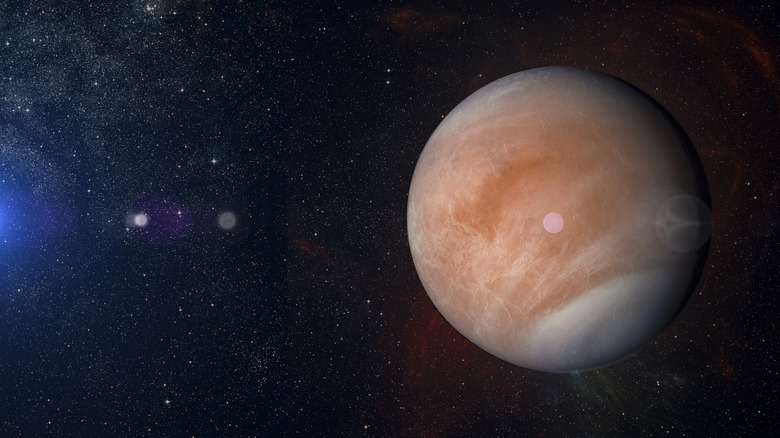NASA Plans To Explore The Hellish Atmosphere Of Venus
NASA has big plans to explore Venus within the next 10 years. Last week, the space agency shared details about its Deep Atmosphere Venus Investigation of Noble Gases, Chemistry, and Imaging (DAVINCI) probe. The probe is scheduled to launch in June of 2029. NASA hopes to have it in position to enter the atmosphere by June of 2031.
DAVINCI will explore Venus' surface like never before
To say that NASA has a lot of big plans for the next 10 years would be an understatement. The space agency is already talking about going back to the Moon. In fact, it has already picked out two companies to build next-generation spacesuits, too. But a manned mission to Mars isn't the only reason to get excited about the 2030s.
NASA also plans to launch the DAVINCI probe. This new probe will then make a two-year journey to get into place over Venus. From there, it will descend through the hellish atmosphere of the planet and explore Venus, like never before.
The second planet from our Sun has been a mystery for decades. NASA and other space agencies have had goals to gain more knowledge about it since the early 1980s. With DAVINCI, we're finally going to get a chance to do that.
A deadly planet with a hellish atmosphere
Because of its proximity to our Sun, Venus has always been considered a deadly planet, with surface temperatures that reach up to 864 degrees Fahrenheit. As such, exploring Venus has always been difficult. But, with DAVINCI, NASA is hoping to learn more about this hellish planet.
For starters, past studies about the planet have revealed that it may have continents similar to Earth. This would mean tectonic plates, which could mean seismic activity. Some scientists theorize that Venus may have been the first habitable world in our solar system, including both a climate and an ocean like the Earth's.
What changed the planet into a hellish planetscape capable of melting lead? Well, that's another question altogether. But, with DAVINCI, we'll have a more proper way to study and explore Venus. A heat shield on the probe will protect it from the intense heat as it makes its way 42 miles above the surface. From there, it will jettison the shield and sample the atmospheric gases.
NASA also plans to touch the probe down in an area known as the Alpha Region mountains. However, it isn't required to operate once it touches the surface. That's because NASA is capturing all of the data it really wants before it gets that far.
More space coverage: Scientists want to send humans to Venus before Mars.

